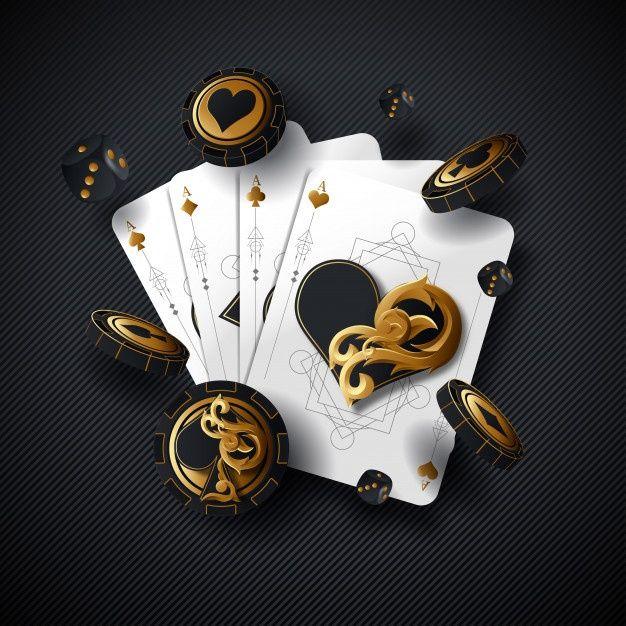
Poker | Principles, Types, Play, & History
Poker
is a card game in which a player must either call the wager, raise the stake, or concede.
It is most popular in North America, where it originated.
It can be found in private homes, poker clubs, casinos, and on the internet.
Poker has been dubbed the United States’ national card game.
And its rules and language are ingrained in American culture.카지노사이트주소
Although there are numerous poker variants reported in the literature.
They all share some common characteristics.
Five cards make up a poker hand.
The hand’s value is inversely proportional to its mathematical frequency.
That is, the higher the hand ranks, the more rare the card combination.
Players can bet that they have the best hand, and other players must either call (match) or concede the stake.
Players can bluff by betting that they have the best hand when they don’t.
And they can win by bluffing if players with better hands don’t call.
Principles of operation
There are variations of poker that can be played with two to fourteen players.
But for the most part, the optimal number of players is six, seven, or eight.
The goal is to win the “pot,” which is the total of all players’ wagers in any one deal.
The pot can be won by either possessing the best poker hand or placing a wager that no one else will call. The following rules apply to almost every type of poker.
Cards
Poker is generally always played using a regular 52-card deck, featuring A (high), K, Q, J, 10, 9, 8, 7, 6, 5, 4, 3, 2, A.
(low only in the straight [a series of five cards numbered consecutively].
Or straight flush [a series of five cards numbered consecutively within the same suit] 5-4-3-2-A.
Certain cards may be labeled as wild cards in social play.
Particularly in “dealer’s choice”;
(a card-playing session in which each player has a turn dealing the cards and selecting the game).
A wild card can be used to represent any other card that its owner chooses.
Wild cards can be introduced into the game in a variety of ways.
The following are the most popular:
- Joker. The joker is used as a wild card in a 53-card deck.
- Bug. The joker—dubbed the bug—counts exclusively as a fifth ace or to fill a flush [a sequence of five cards of the same suit], a straight, or certain unique hands using the same 53-card pack.
- Wild deuces. Wild cards are all four deuces (2s).
- One-eyes. Only the king of diamonds, jack of spades, and jack of hearts are shown in profile in the regular pack. They’re frequently referred to as “wild cards.”
Poker hand rankings
Standard poker hands are ranked according to their odds (probability).
If two or more identical hands are dealt, the winnings are split equally.
In poker, the suits have no relative ranking. When a wild card is present in the game, the best possible hand is five of a kind, which beats any straight flush.
There may be identical fours of a kind or threes of a kind when there are numerous wild cards, in which case ties are broken by the highest unmatched cards or secondary pairs (in a full house [a five-card hand made up of three of a kind and a pair]).
Deal
Any player starts the game by taking a deck of cards and dealing them one by one to the left, face up, until a jack appears.
The first dealer is the player who receives that card.
Dealing and betting turns are always passed to the left from player to player.
Any player may shuffle the cards after each deal, with the dealer having the last say.
For a cut, the dealer must offer the shuffled pack to the right-hand opponent.
If that player refuses to cut, any other player is free to do so.바카라사이트
A professional dealer
is used in poker clubs, casinos, and tournaments to designate the nominal dealer for betting purposes by passing a round disc (known as a dealer button) clockwise each hand.
Furthermore, such environments almost always charge the players either an hourly rental fee for their seats or a tiny percentage (say, 5%) from each pot.
Procedure for betting
Depending on the poker variety, each deal contains one or more betting periods. One player has the privilege or obligation of placing the initial wager in each betting interval, as determined by the rules of the version being played.
This player, and each player after him, must place enough chips (representing money, for which poker is nearly always played) in the pot to make his total contribution to the pot at least equal to that of the player before him.
When a player does this, he is known as an active player or in the pot. If a player refuses, he discards his hand and is referred to as dropping or folding, and he is no longer eligible to compete for the pot.
Each player
may be forced to make an ante contribution to the pot prior to the transaction.
The first person to place a wager is known as the better, a player who matches the prior bet is known as the caller, and a player who bets more than the previous bettor is known as the raiser.
In some variations, a player may check, or stay in without betting, if no other player has placed a wager during the betting interval.
Limits on wagering
There are “no-limit” or “sky’s-the-limit” games, but most poker games have a restriction on how much you can stake in any game. There are three common approaches.
A set limit
No one can bet or raise more than the set limit in fixed-limit games.
The limit in draw poker is usually double what it was before the draw—for example, two chips before the draw, four chips after.
In stud poker, the last betting interval’s limit is usually double that of the previous betting intervals. (When any player’s revealed cards include a pair, the greater limit also applies.)
The game’s various versions are outlined below. In a fixed-limit game, the number of raises that can be made in each betting interval is normally limited.
Maximum potency
In a pot-limit game, a player can only bet or raise up to the amount in the pot at the time of the bet or raise.
When raising, a player may first place the amount of chips needed to call the previous bet in the pot, then raise by the same number of chips.
When playing pot limit, it’s normal to set a maximum limit on each bet or raise, regardless of the pot size.
The main types
Poker is divided into three categories.
In draw poker, each player’s whole hand is kept hidden until the showdown, whereas in stud poker, some but not all of a player’s cards are dealt face up, and in community-card poker, some cards are exposed and used by all players to create their best hands. 안전한카지노사이트
Furthermore, almost any type of poker can be played high-low (sometimes spelt hi-lo) or low-low (also known as lowball).
The pot is split evenly between the highest-ranking
poker hand and the lowest-ranking poker hand in high-low.
If the amount of chips is odd, the high hand wins. If two or more hands are tied for high or low, they split the pot evenly.
In most games, the lowest possible hand in two or more suits is 7-5-4-3-2, however in rare games, the ace can be classified as the lowest card, resulting in 6-4-3-2-.
Poker draw
In straight poker, each player is dealt five cards face down, with one betting interval starting with the person to the dealer’s left and ending with a showdown.
After the 1850s, draw poker took over, allowing each active player, starting with the dealer’s left, to discard one or more of his initial cards and replace them with replacements from the undealt section of the pack.
(A “stand pat” player is one who refuses to draw cards.)After the draw, there is a second betting interval before the showdown.
To make the first bet before the draw, a minimum hand, such as a pair of jacks, is sometimes required.

